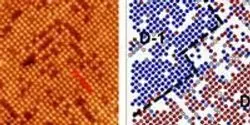Analytical Instruments

Researchers from Carnegie Mellon University have developed a novel method for creating self-assembled protein/polymer nanostructures that are reminiscent of fibers found in living cells. The work offers a promising new way to fabricate materials for drug delivery and tissue engineering applications. The findings were published in the July 28 issue of Angewandte Chemie International Edition.

A novel combination of microscopy and data processing has given researchers at the Department of Energy’s Oak Ridge National Laboratory an unprecedented look at the surface of a material known for its unusual physical and electrochemical properties.

Learn about a flexible, universal method developed for the analysis of inter-class separations of neutral and amphipathetic lipids in this application note.

Amrita Cheema, PhD, associate professor and codirector of the Proteomics and Metabolomics Shared Resource at Georgetown University Medical Center, talks to contributing editor Tanuja Koppal, PhD, about the growing use of mass spectrometry as a tool for detecting biomarkers for early prediction and diagnosis of disease, leading to personalized therapy. She highlights that improvements in software
and hardware have led to better resolution and specificity, which in turn have increased the use of this technology for biomarker discovery and will potentially help pave its path into the clinic as a diagnostic tool.

A forensics investigator dusts a crime scene for fingerprints. When she finds one, she reaches to her holster, pulls out a handheld device, and aims it at the fingerprint. The device captures the image and also the chemical composition. That chemical analysis reveals that the person who left the print had touched ephedrine—an illegal drug, which is a stimulant that goes by many street names, including meow. With this information, the investigators can use biometrics—the fingerprint— to identify the person and the chemical analysis to start piecing together the crime.












